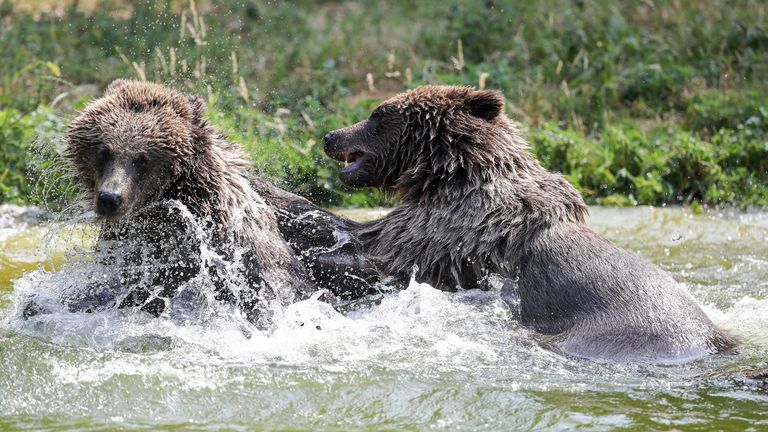Whipsnade zoo had three bears. A tree trunk blew over, allowing two of them to climb into the neighbouring enclosure that contained boar.

The bears were both shot. Now there are a number of issues with this.As predators bears number for fewer in the wild then boar do. The argument was that the bears presented a serious threat to human life, while this is conceivably true, the bear was clearly not loose in the zoo it was in the boar enclosure. While the boar enclosure may have smaller fences than the bear enclosure, it seems unlikely that the bear would have been able to climb out rapidly and become a threat to human life – indeed the bear would likely have spent a significant length of time exploring the boar enclosure.
Boar can be significantly dangerous animals as well, indeed in the wild bears attack boar relatively rarely, as they are more likely to get injured then when trying to eat things like deer species. As such the bears may well have given a wide berth to the boar and (even if not given the visitors were no longer present as the first thing a zoo will do when any animal is no longer fully secure, is the visitors will be rapidly moved into secure areas such as the zoo shop).
European boar population numbers in excess of 10 million in the EU (even in the UK where boar were exterminated, accidental reintroductions mean the UK has as many as 4000 boar living wild) therefore the loss of this zoo boar would have been less problematic than the loss of these two bears. There are only estimated to be 17000 bears in the whole of Europe- and the majority of these are concentrated in a small number of countries. I have been lucky enough to see them in Croatia and Sweden – oddly not on our visit to Romania.
Now they argue that while tranquilizer was available in the zoo, it often takes 15 minutes to work and the animal becomes dangerous in the meantime.
There are many questions about this – surely there are tranquilizers that work faster than this. Those catching animals live from the wild need tranquilizers that work faster than 15 minutes. Perhaps the zoo has a one-size-fits-all tranquilizer system – but animals can be put to sleep much faster. Perhaps the zoo need specific tranquilizers for the different animals?
These kind of incidents are going to happen from time to time in zoos. Some people would argue you that this means we shouldn’t keep the animals in the zoo in the first place. As I have written before, I disagree. Firstly many species of wildlife are under a great deal of threat in the native habitat. I would hope that at some point humanities numbers will reduce and there will be more space for animals in the wild, but in the meantime we have a responsibility to keep a genetically diverse group of these animals in captivity should we accidentally kill them off in the wild. It is true that the eastern European bears still living large numbers, though the number of bears in Western Europe is low with populations in Italy and France on the verge of extinction.
I hope lessons are learnt, but mistakes like this will happen from time to time. However the zoo must learn from it and improve security to allow this to never happen again. They must demonstrate that the animals in their care are are safer than they would be in the wild. Captive animals tend to have much longer lifespans so this is relatively easy to show however zoos who have too many of these incidents should not be allowed to look after the animals anymore – whether we are there yet or not is a judgement to be made. Certainly, it is true that now Whipsnade and to a lesser extent other zoos must now educate the public and explain what happened and how they have mitigated the risks that led to this horrible outcome.











